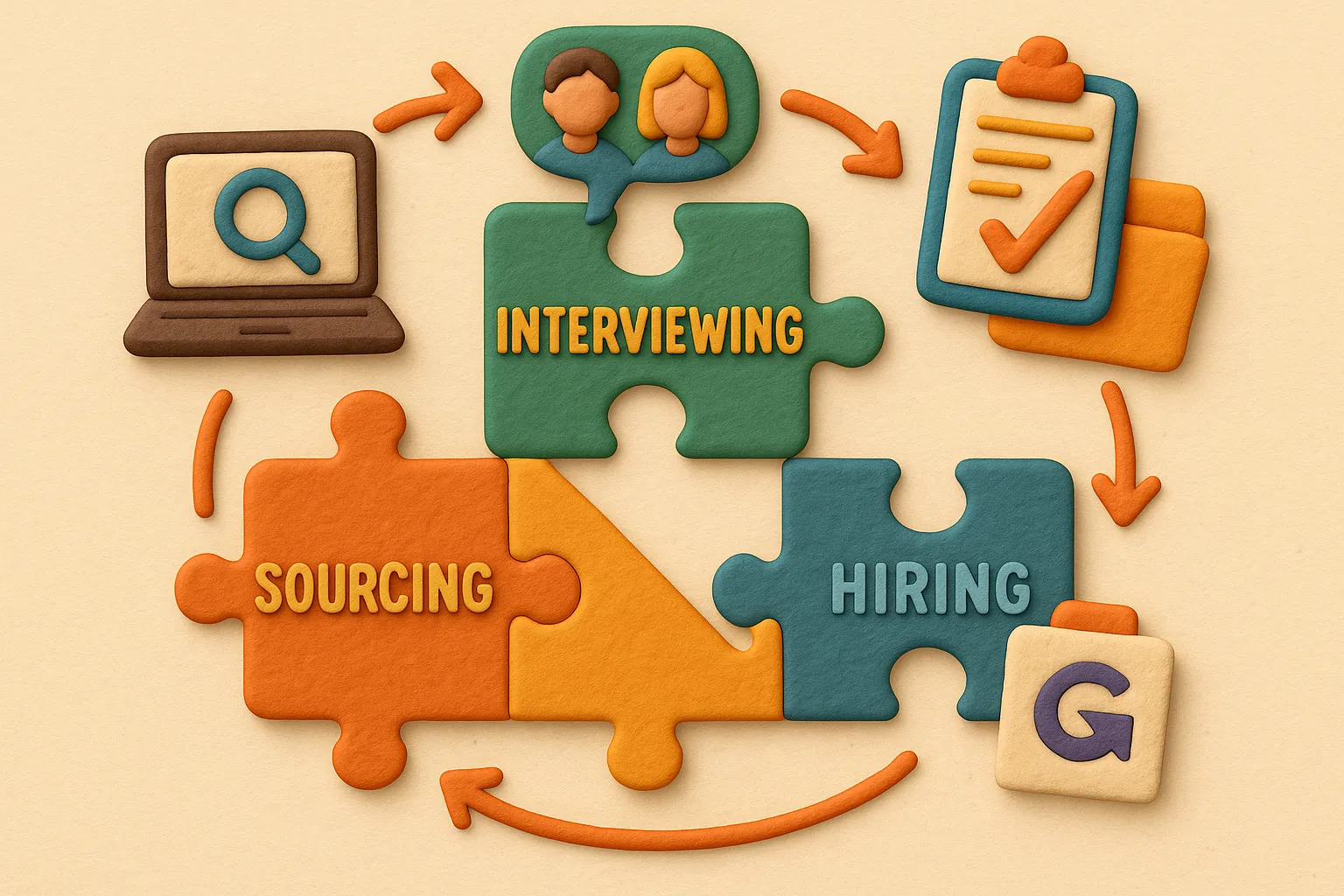8 Essential Recruiting Steps Every Pro Should Master

Recruitment, at its core, revolves around four foundational elements: sourcing, interviewing, evaluating, and deciding. These are the anchors of any hiring process. But in practice, each of these stages holds depth, nuance, and decisions that impact the success of a hire long after their first day. In this article, we’ll take a closer look at these core pillars - breaking them down into clear, actionable steps that support both recruiters and candidates through every phase.
Hiring isn’t just about filling seats. It’s about creating long-term matches, understanding the market, and managing relationships with empathy and precision. Whether you’re a freelance recruiter or part of a small team, you know how many moving parts this process has. I’m here to walk you through the most important steps - the ones that build clarity, structure, and confidence.
1. Start with the "Why": Define the Real Hiring Need
Before anything else, get clear on the purpose of the hire. Is it a replacement, an expansion, a strategic shift? Align with your client or hiring manager on the business context. This ensures you're not just matching skills but solving a real business problem.
Tip: Use intake meetings to get beyond job titles. Ask about team dynamics, past hires who succeeded (or didn’t), and how success will be measured.
2. Research the Talent Market
You can't find what you don’t understand. Research salary benchmarks, competitor job posts, talent availability, and location dynamics. This step isn’t optional - it shapes your strategy and sets realistic expectations.
Helpful questions:
- Are there enough candidates with this skillset in the target location?
- Are the salary expectations aligned with the budget?
- What are similar companies offering?
Bonus: Here's where free tools can make a big difference. Don’t rely on gut feeling alone.
3. Build a Detailed Candidate Profile
This is the human blueprint for your search. Go beyond years of experience and keywords. Think about working style, communication preferences, and adaptability. Ask: Who will thrive in this team?
Checklist to include:
- Must-have and nice-to-have skills
- Values alignment
- Soft skills and personality traits
- Career motivations
How I help: I search candidate profiles automatically from job descriptions(or just natural language prompts), saving you time and helping reduce bias early on.
Still wondering how to quickly spot what truly matters in a resume? Don’t miss our article on resume screening in IT recruitment - it breaks down how to read between the lines and use AI to identify what counts.
4. Source with Focus, Not Volume
Forget about casting the widest net. It's about finding the right fish in the right pond. Use Boolean strings, niche platforms, referrals, and your existing network - and yes, also AI.
Pro tip: Don’t overlook specialized platforms. Mass-market job boards won’t always get you the right person.
5. Craft a Personal and Timely Outreach
The outreach email or message is your first impression. Keep it short, sincere, and focused on the candidate’s interests. Avoid sounding like a robot.
Better outreach structure:
- Start with why them
- Mention a specific skill or project
- Share a key role detail
- Be transparent about next steps
What I offer: I help personalize outreach using what I learn from candidates' profiles, saving time while keeping it human.
6. Streamline the Interview Process
Need help choosing the right questions? We've compiled 10 essential interview questions to ask any potential hire - perfect for cutting through rehearsed answers and getting to real insight.
Interviews are where potential turns into clarity. Keep the structure tight: who meets the candidate, when, and why. Every interview should answer a specific question.
Best practices:
- Align on the interview rubric
- Keep feedback timely and centralized
- Prepare your hiring team
Struggling with coordination? Here’s a piece on ATS tools that help smaller teams stay organized.
7. Make a Decision with Confidence
At this point, you’re balancing fit, potential, and logistics. But indecision kills momentum. Set a clear framework for decision-making and stick to it.
Framework to consider:
- Skills alignment (does the candidate meet the core requirements?)
- Cultural fit (will they thrive in this environment?)
- Motivation match (why do they want this job?)
- Manager confidence (do they feel ownership of the hire?)
Where I come in: I help you track evaluations and compare candidates across multiple data points, so decisions feel informed, not rushed.
8. Make the Offer and Stay Close
Once you’ve chosen your candidate, timing and tone are everything. Make the offer feel personal. Check in often. Hiring doesn’t end with a signed contract - it ends with a successful start.
What matters now:
- Clear offer letter and expectations
- Support during notice period
- First-day preparation
What I do here: I remind you of key touchpoints, track offer status, and help maintain a smooth experience for everyone involved.
Final Thought: Hiring is Human
Processes matter. Tools matter. But what makes recruitment work is empathy, follow-through, and clarity. When you get the steps right, you create something lasting - not just for the business, but for every person who says "yes" to a new chapter.
Thanks for helping me do this work. You make me better every day.
Sincerely yours,
Stay Ahead in Hiring
Get expert tips, AI insights, and hiring trends straight to your inbox. No spam. Just the good stuff.



